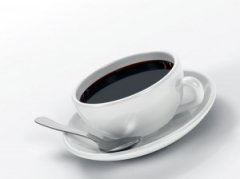Grinding of espresso beans
A cup of espresso requires 7 to 9 grams of ground coffee beans mixed with about 57 grams (4 tablespoons) of water. This will make a small cup of black espresso of about 43 grams, with a strong aroma, a slight bitterness in sweetness, and almost pulpy. After grinding, the oil in the coffee bean comes into contact with the air and begins to oxidize almost immediately and lose its original flavor. This will also have an impact on the bubble. To ensure the best flavor and aroma, the amount of grinding should be as close as possible to the amount needed for brewing.
Espresso powder is more delicate than the coffee powder commonly used in brewing. It is a powder-like substance with a slightly gravelly feel and similar to the density of ultra-fine granulated sugar. This density can play an appropriate role in resisting the forced flow of water. It is generally believed that the coffee powder produced by the blade grinder (that is, the blade starts to rotate after pressing the button) is of poor quality because they chop up the coffee beans and then crush them, rather than grinding them. The burr grinder is better. No matter it is hand crank type or electric type, the burr grinder can cut the coffee beans into controllable size fragments to achieve the best effect of flavor extraction.
Coffee beans (left) and coffee powder (right). These coffee beans are very finely ground and are much finer than the coffee powder used in the drip coffee machine. Please note that this density is almost like sugar.
After measuring or matching the appropriate amount of coffee powder, carefully put the powder into Gupa, a metal cup with a small hole in the bottom. Then, the compacted powder has a uniform adsorption force between the particles. Only by compacting them, the water will not flow through the powder too quickly, causing the coffee to taste too light. There are many kinds of compaction tools available. Most people like to use the flat bottom, but some people like to use the round bottom. Like many other parts of the art of making espresso, there are best standards for tightness; not too hard, not too soft, just right. Finally, the key to proper grinding is the extraction time. After the correct dose and proper compaction, the best extraction time for a small cup of espresso should be 25-30 seconds.
Important Notice :
前街咖啡 FrontStreet Coffee has moved to new addredd:
FrontStreet Coffee Address: 315,Donghua East Road,GuangZhou
Tel:020 38364473
- Prev

How to enjoy espresso
If you don't like drinking espresso directly, try many other espresso drinks. Many stores like to have their own iconic drinks, but some basic recipes are the same wherever they go:
- Next

Coffee-tracing the bitter and loving taste
Many people will think that caffeine is the source of coffee bitterness, but in fact caffeine accounts for only 1/10 of the bitterness, so where does the remaining 90% come from? A cup of coffee is a complex drink made up of more than 30 chemicals that determine the taste, aroma and acidity of the coffee. Since the 1930s, scientists have separated and identified
Related
- Beginners will see the "Coffee pull flower" guide!
- What is the difference between ice blog purified milk and ordinary milk coffee?
- Why is the Philippines the largest producer of crops in Liberia?
- For coffee extraction, should the fine powder be retained?
- How does extracted espresso fill pressed powder? How much strength does it take to press the powder?
- How to make jasmine cold extract coffee? Is the jasmine + latte good?
- Will this little toy really make the coffee taste better? How does Lily Drip affect coffee extraction?
- Will the action of slapping the filter cup also affect coffee extraction?
- What's the difference between powder-to-water ratio and powder-to-liquid ratio?
- What is the Ethiopian local species? What does it have to do with Heirloom native species?

